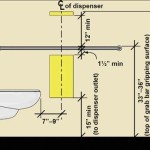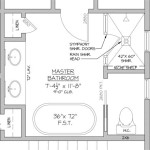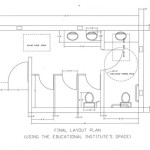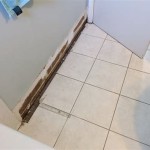Bathroom Vent Fan Code Requirements: Ensuring Safety and Comfort
Bathroom vent fans play a crucial role in maintaining a healthy and comfortable indoor environment. They remove moisture, odors, and pollutants, preventing the growth of mold and mildew, and reducing the risk of respiratory problems. To ensure that these fans effectively perform their function, building codes establish specific requirements for their installation and operation. This article will delve into the key aspects of bathroom vent fan code requirements, highlighting their importance and providing practical insights.
1. CFM Rating and Sizing
One of the most critical aspects of bathroom vent fan code requirements is the fan's CFM (cubic feet per minute) rating. The CFM rating indicates the volume of air the fan can move in a minute, and it directly affects the fan's ability to effectively remove moisture. Building codes typically specify a minimum CFM rating based on the bathroom's square footage. For instance, a small bathroom may require a fan with a 50 CFM rating, while a larger bathroom may require a fan with a 100 CFM rating or higher.
Proper sizing is essential to prevent moisture buildup, which can lead to mold and mildew growth, damage to building materials, and health hazards. Factors such as the number of fixtures (shower, bathtub, sink) and the frequency of use also influence the required CFM rating. It is crucial to consult local building codes and consult with a qualified contractor to determine the appropriate CFM rating for a specific bathroom.
2. Location and Installation
Building codes specify the proper location and installation of bathroom vent fans. Ideally, vent fans should be located directly above the shower or bathtub, as this is the primary source of moisture. The fan should be installed as high as possible on the wall to maximize airflow and reduce the possibility of condensation. It is also vital to ensure that the vent fan's exhaust duct is properly sealed and directed outdoors, preventing moisture from accumulating within the attic or other enclosed spaces.
Vent fan installations should comply with local building codes, which may include requirements for duct size, material, and length. To ensure proper performance and prevent fire hazards, it is essential to avoid installing vent fans near flammable materials, such as wood framing or insulation. It is also important to ensure that the fan's exhaust duct is properly secured and supported to prevent sagging or damage.
3. Operation and Maintenance
Bathroom vent fans should be operated during and after each shower or bath to remove moisture effectively. Building codes may require that the fan continue running for a specific duration after use, typically for a minimum of 15 to 20 minutes, to ensure adequate ventilation.
Regular maintenance is essential to maintain the proper operation of bathroom vent fans. This includes cleaning the fan blades and exhaust duct to remove dust and debris, which can hinder airflow. It is also important to check the fan's motor for signs of wear or damage and replace it as necessary. Proactive maintenance helps ensure that the fan continues to operate efficiently and effectively remove moisture.
4. Energy Efficiency
As energy conservation becomes increasingly important, building codes emphasize the use of energy-efficient bathroom vent fans. These fans typically have a higher CFM rating but consume less power, contributing to reduced energy consumption and lower utility bills. Energy-efficient vent fans may utilize features such as variable speed control, which allows users to adjust the fan's airflow based on the specific needs of the bathroom.
Local building codes may also specify minimum energy efficiency standards for bathroom vent fans, such as the Energy Star rating. By selecting and installing energy-efficient vent fans, homeowners can contribute to reducing their environmental footprint and saving money on energy costs.

Code Requirement For Bathroom Vent Location Exhaust Checkthishouse

Bathroom Exhaust Fans Building America Solution Center

Bathroom Exhaust Fan Gfci Vent Protection Requirements Checkthishouse

Can A Bathroom Fan Vent Into The Attic Code Explained Building Trainer

Do You Need A Fan In Bathroom With Window Hvac Boss

Ventilation Pa Energy Code

We All Like To Vent Dealing With The Hot And Moist Air Ncw Home Inspections Llc

Invisible Ventilation For A Better Bath Fine Homebuilding

Bathroom Exhaust Fans Ventilation Fan

Code Requirement For Bathroom Vent Location Exhaust Checkthishouse
Related Posts







